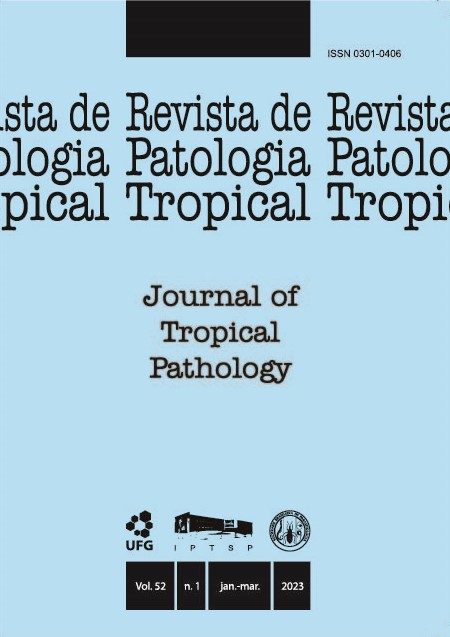Factors for unfavorable evolution of snakebites in children
DOI:
https://doi.org/10.5216/rpt.v52i1.74141Abstract
Pediatric patients have particularities in the clinical manifestations and complications of snakebite envenomation (SBEs), and few studies have examined this population. The objective of this paper was to study snakebites in a pediatric age group treated at a reference hospital and to evaluate factors associated with unfavorable evolution. A cross-sectional study with a clinical-epidemiological description and identification of the factors related to unfavorable evolution in patients aged <19 years old seen from January, 2018 to November, 2019 was performed. Complications related to the SBE, such as compartment syndrome, secondary infection, extensive necrosis, hemorrhage, and kidney damage, were considered unfavorable evolution. From the 325 patients in the sample, 58 were aged <19 years old; 40 (69%), 0-12 years old; and 18 (31%), 13-18 years old. All patients had local manifestations (mild, moderate, and severe), and 36 (62%) had an unfavorable evolution. Fourteen (24.1%) patients had compartment syndrome, with a significant risk association between 0 and 12 years old (p = 0.019). Two factors significantly contributed to unfavorable evolution: the timing from the bite to medical care being ≥6 hours and additional antivenom therapy needed. We conclude that the younger the patient, the smaller body segment affected, leading to disproportionality between the affected area and the amount of inoculated venom, contribute to more frequent local manifestations and complications in children rather than adults. Because of the relationship between body area and vascular volume in children differs from that in adults, the same volume of venom inoculated by snakes will be disproportionate in these two groups. Therefore, in the treatment of pediatric patients, increasing the volume of antivenom therapy is possibly necessary. Furthermore, as in adults, six hours between the bite to medical care increases the risk of complications and mortality.
KEY WORDS: Snakebites envenomation; venom; antivenom; pediatric population.
Downloads
Downloads
Published
How to Cite
Issue
Section
License
The manuscript submission must be accompanied by a letter signed by all authors stating the full name and email address, confirming that the material has not been published or is under consideration for publication elsewhere, and agreeing to transfer copyright in all media and formats for Journal of Tropical Pathology. The authors will not be paid for published articles. They are solely responsible for the content of those articles, even if the Editor holds the right to adjust them to the norms of the journal.
The reviewers will not be paid for the peer review process.

